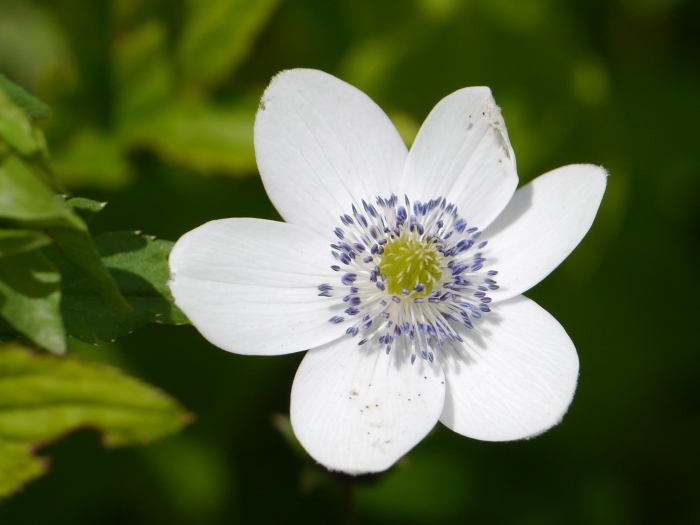Riverside Windflower
(Eriocapitella rivularis)
Riverside Windflower (Eriocapitella rivularis)
/
/

© Dinesh Valke
CC BY-SA 4.0
Image By:
© Dinesh Valke
Recorded By:
Copyright:
CC BY-SA 4.0
Copyright Notice:
Photo by: © Dinesh Valke | License Type: CC BY-SA 4.0 | License URL: http://creativecommons.org/licenses/by-sa/4.0/ | Uploader: dineshvalke | Publisher: iNaturalist |

























Estimated Native Range
Summary
Eriocapitella rivularis, commonly known as riverside windflower, is a perennial herb that is native to moist meadows, forest margins, and streamsides in the Himalayas and across South and East Asia. It can grow up to 47 inches (120 centimeters) in height and is characterized by its deeply lobed leaves and showy white flowers, which are actually petal-like sepals that bloom from May to August. The flowers are typically 1-2 inches in diameter and are held above the foliage on slender stems, creating a delicate and airy appearance.
Riverside windflower is valued for its extended flowering period and its ability to thrive in moist, shady conditions, making it a popular choice for woodland gardens, shaded borders, and naturalized areas near water features. It prefers consistently moist soil, but well-drained conditions are essential to prevent root rot. This species prefers partial to full shade and is relatively low maintenance once established. While not commonly reported as invasive, gardeners should be aware of its potential to spread in ideal conditions. It is not typically afflicted by serious pests or diseases, but powdery mildew can occur in overly humid environments.CC BY-SA 4.0
Riverside windflower is valued for its extended flowering period and its ability to thrive in moist, shady conditions, making it a popular choice for woodland gardens, shaded borders, and naturalized areas near water features. It prefers consistently moist soil, but well-drained conditions are essential to prevent root rot. This species prefers partial to full shade and is relatively low maintenance once established. While not commonly reported as invasive, gardeners should be aware of its potential to spread in ideal conditions. It is not typically afflicted by serious pests or diseases, but powdery mildew can occur in overly humid environments.CC BY-SA 4.0
Plant Description
- Plant Type: Herb
- Height: 1-1.5 feet
- Width: 0.5-1 feet
- Growth Rate: Moderate
- Flower Color: White
- Flowering Season: Spring
- Leaf Retention: Evergreen
Growth Requirements
- Sun: Part Shade, Full Shade
- Water: Medium
- Drainage: Medium, Slow
Common Uses
Border Plant, Butterfly Garden, Low Maintenance, Potted Plant, Water Garden
Natural Habitat
Native to moist meadows, forest margins, and streamsides in the Himalayas and across South and East Asia
Other Names
Common Names: River Anemone
Scientific Names: , Eriocapitella rivularis, Anemone barbulata, Anemone dubia, Anemone dubia, Anemone esquirolii, Anemone flore-minore, Anemone geraniifolia, Anemone hispida, Anemone leveillei
GBIF Accepted Name: